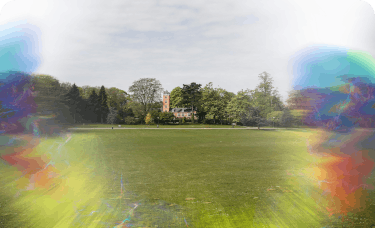This rare syndrome has been in the news lately – and it has more to do with migraines than little Alice.
- Alice in Wonderland syndrome is a rare condition of temporary episodes of distorted perception of body size.
- Episodes happen most often in children and young adults (and, for some, eventually stop occurring over time).
- Some consider the visual disturbances to be an aura that comes before a migraine, or a rare “migraine variant.”
You might have heard of Alice in Wonderland syndrome – in a way that has more to do with migraines than it does with Lewis Carroll’s charming story of a girl who fell down the rabbit hole. In a moving piece that appeared in The New York Times, writer Helene Stapinski shared her personal experience with the syndrome. Stapinski recounts how her daughter, while suffering from a bad headache, told her “Everything in the room looks really small.” This realization opened a door to Stapinski’s own experiences with this rare syndrome, and the story caught fire on social media in the following days.
If you or a family member experiences similar perceptions, understanding what this syndrome is, and how it may relate to migraines, is important for your discussions with your doctor. Let’s dig into what Alice in Wonderland syndrome is and the potential connection it has to migraines.
Understanding Alice in Wonderland Syndrome
Alice in Wonderland syndrome, also known as Todd’s syndrome, is a rare condition of temporary episodes of distorted perception of body size that was first described in the 1950s. During these episodes, those with Alice in Wonderland syndrome feel that their body is either larger or smaller than normal, and/or objects and people around them appear larger or smaller than usual — much like the well-known character Alice experiences in Carroll’s stories. In fact, Carroll himself suffered from migraines, and it has been suggested that some of his own experiences may have been inspiration for his writing.1,2
Episodes of Alice in Wonderland syndrome are not hallucinations; and although the experience is quite vivid, the individual recognizes that what they are seeing, and feeling is not real.3 When and how often these episodes happen is unpredictable, and the episodes themselves are usually relatively short.
For example, in one recent analysis of 81 people who experienced this syndrome, 17 had reported the duration of their episodes. Nine of these participants had episodes lasting less than five minutes, and seven experienced episodes lasting from five to 30 minutes. However, one person in this group had an episode that lasted for two days.4
Although these episodes happen most often in children and young adults (and, for some, eventually stop occurring over time), Alice in Wonderland syndrome can affect individuals of all ages, and as many as one-third of sufferers continue to experience ongoing episodes.
In many cases, the cause of the syndrome is not defined, and episodes can arise from several different medical conditions, most commonly an infection.









